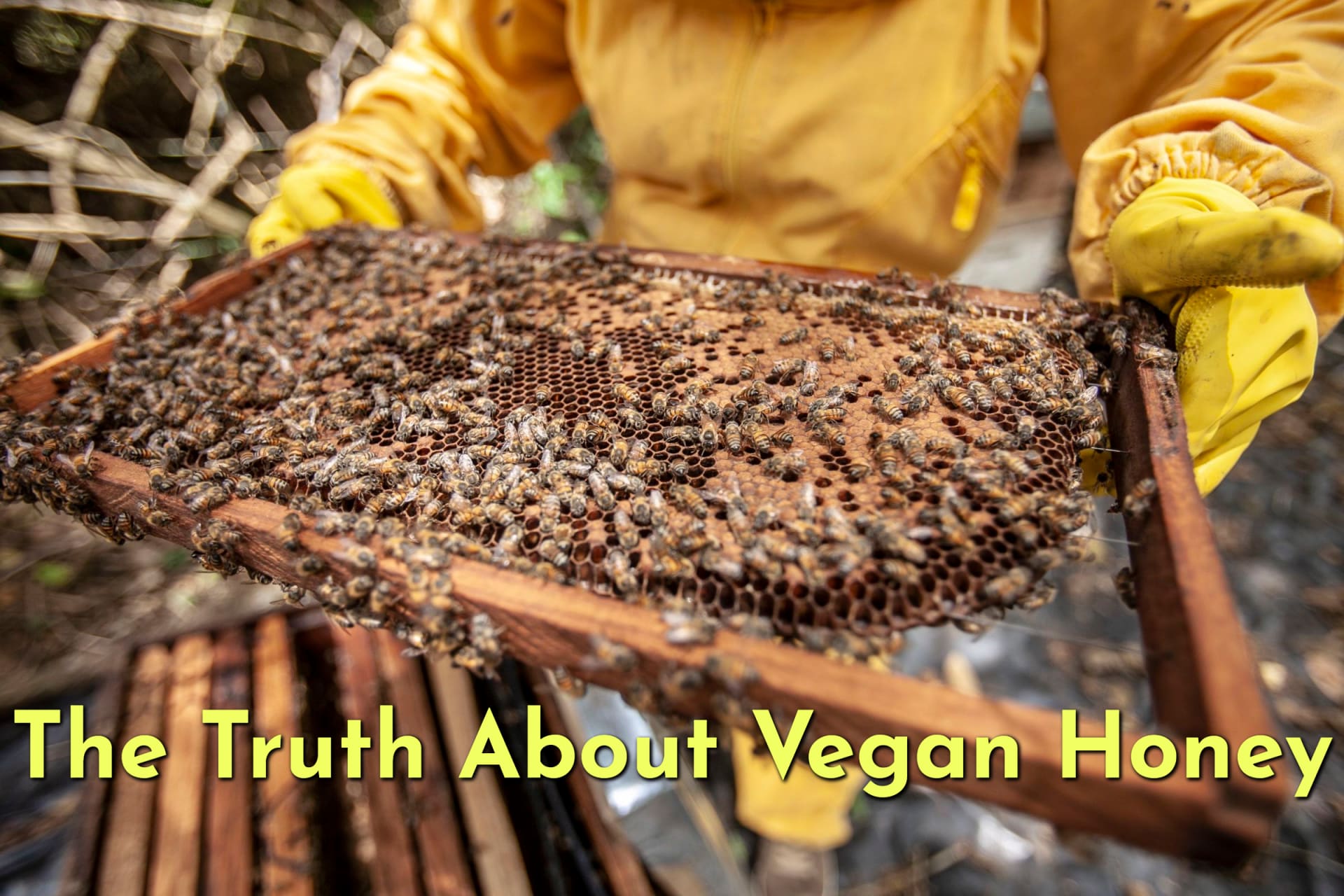Honey is a wonderfully complex and flavorful source of sweetness and energy. Its flavor and color varies dramatically depending on the nectar source. Honey from flowering plants like clover, alfalfa, and canola is pale or white, with a mild, sweet, neutral flavor. Honey from other plants or trees like chestnut, buckwheat, and avocado are much darker, thick like molasses and have a strong flavor. Varieties of deep amber honey have intensely buttery, smokey, bitter, woody, or even spicy flavors. There’s also a wide variety of honey made from herbs and fruiting trees that take on distinct flavors and scents of the plants they are produced from. With such a wide flavor profile and culinary applications, honey is a popular addition to many dishes. It’s also often used as a sugar substitute in raw food diets. However, with increasing concerns over food production, many people to wonder: Does vegan honey exist?
Why Do Bees Make Honey?
Like any other animal, bees have particular nutritional requirements for a healthy diet. Honey is a huge part of where that nutrition comes from. Regardless of the source of its pollen, honey is produced through the hard work of bees collecting nectar from flowering plants. This thin, sugary fluid is held in the bee’s crop, a specialized stomach where the nectar mixes with enzymes. Once back at the hive, the bee deposits the nectar in a series of wax cells, called honeycomb. Then, the beating wings of worker bees facilitate the evaporation of moisture from the nectar, thickening it into honey. The bees then cap the cells to save it as a food source for later in the year when other sources of food are scarce.
Is Honey Vegan?
People who embrace a completely vegan lifestyle do not eat animals or animal products. They also refrain from using any materials or products produced through the exploitation of or cruelty to animals. For example, strict vegans not only do not eat meat, dairy, or eggs but may also choose not to wear fur and leather or use glue made with animal byproducts.
Bees, strictly speaking, are animals. They are taxonomically classified as Arthropods which belong to the Insecta class of the greater Animalia kingdom. For this reason, ‘vegan honey’ may seem like a bit of an oxymoron and many vegans choose not to eat purely because it is, by its strictest definition, an animal product.
For others, the question of vegan honey has less to do with where it comes from but the production process. Like milk and eggs, honey production is year-round with or without the intervention of humans. Some vegans reason that these products are acceptable so long as the animals are treated humanely. Commercial and even some smaller beekeeping operations may employ hive management methods that conflict with concerns over the ethical treatment of animals. When looking for vegan honey, things to look out for are:
Artificial Feed
Depending on the location of the hive, bees can survive the cold months quite comfortably on anywhere from 40 to 90 pounds of honey. Bees continue to produce honey for as long as the nectar is flowing. They do this even if they already have sufficient stores to get them through the winter. This surplus honey can amount to anywhere from 10 to 60 pounds per hive in any given year. Often times on a large commercial scale, more honey is harvested and beekeepers feed the bees a diet of artificial feeds made from sugar instead of allowing them to rely on their natural diet of honey. This process of harvesting honey takes a toll on the health of the bees and the hive. However, in ethically and organically managed hives, beekeepers only harvest and package the surplus honey for consumer use.
Wing Clipping
In many commercial and even some small apiaries, beekeepers practice wing clipping to prevent the colony from swarming. This is the practice of removing the queen bee’s wings. Bees typically will not swarm without their queen. Clipping her wings is a quick and easy fix to a number of the reasons a colony might swarm. However, many consider this practice inhumane, especially when there are other, more ethical ways to prevent swarming behavior.
Hive Burning
American Foul Brood is a highly contagious and deadly disease that can afflict beehives. One of the options for dealing with the disease is to torch the hive, with the sick bees inside, to prevent it from spreading to other hives. This practice is, of course, considered inhumane as well as unnecessary as it is possible to prevent AFB with regular monitoring.
Pesticide Use
Neonicotinoid is a widely-used class of insecticides often applied around beehives to protect the colonies from harmful intruders such as mites and fungi. The use of these pesticides is controversial as many beekeepers believe it is responsible for Colony Collapse Disorder. CCD is a phenomenon in which the majority of the mature worker bees suddenly die off or swarm, leaving behind their queen and a hive full of resources. Without enough worker bees to tend to the brood and immature bees, the hive ‘collapses’ and dies. There are other, more humane and less controversial methods for preventing mite and fungal infestations.
Depending on your personal beliefs, you can introduce honey into your vegan diet. To determine if your honey is vegan, be sure to contact the apiary you plan to purchase from. They’ll be able to answer questions about their methods for hive management and honey harvesting. Or, if you fancy picking up a new and rewarding hobby, try establishing a hive of your own!
Here at Beek’s Best we want to help people explore the honey hobby. It’s our goal to make sure that beginning beekeepers start off on the right foot. We can help point you toward the best when it comes to honey and beekeeping.


Recent Comments